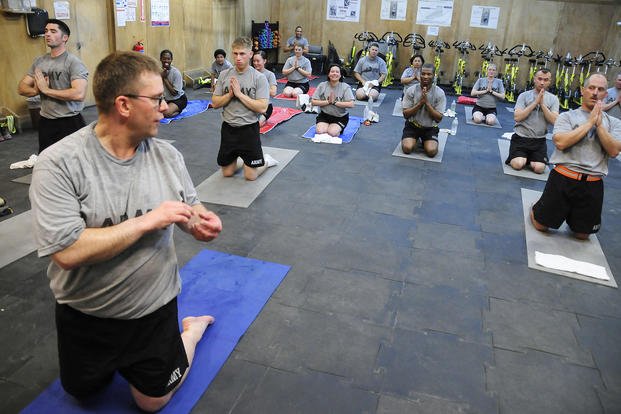Have you ever focused on a physical goal that required significant training, pushed yourself too hard and then sustained an injury? Scenarios like this are classic cases of overtraining or under-recovering or simply doing too much, too far, too soon, too fast.
If you're on a journey preparing for special ops or hardcore physical events (ultramarathons, Ironman triathlons, obstacle course racing), here is a list of the most common ways injuries occur:
1. Too much running. The number one reason why people get injured is simply running too much without any logical progression. Injuries such as compartment syndrome, shin splints, stress fractures and tendinitis in joints (feet, ankles, knees, hips) can take weeks, months or even a year or more to make a full recovery, depending upon the severity. Do not just jump into a long run week of 30-40 miles just because a few years ago, you could. Time away from training requires a steady buildup even if you took only a month off. If you ran in high school and are 25 years old or older, that does not count. You are a beginner again. See ideas for beginner running programs and other progressions.
2. Too much heavy lifting. After running, injuries in the weight room are a close second place. Lifting a heavy weight while pushing your personal record can be a fun challenge, but it also can bring strains and other injuries, such as to your shoulders and torn biceps.
3. Pushing too hard in martial arts. Karate, boxing, jiu-jitsu, MMA and other contact martial arts where sparring is part of the workouts can cause injuries -- either by the trauma of hitting something harder than your body or by joint manipulations that can result in tears or dislocations. These injuries happen fairly often to those who like to practice combative sports. However, as you get closer to your selection or need to maintain a certain level of abilities for your job, you should consider not doing the events that statistically cause the most injuries.
4. Too many repetitions. Physical training in the military typically means calisthenics. There are some calisthenics tests that require absolute maximum effort to be competitive, and the process to get there requires pushing yourself to get into that kind of conditioning (100+ push-ups/sit-ups, 20+ pull-ups as an example).
Often, people will do these events daily with no recovery period. Even people in their late teens and early 20s need to recover from lifting weights and high-repetition calisthenics workouts. Give yourself a good 48 hours prior to working the same muscle groups again when doing high-volume calisthenics workouts.
High volume is relative and progressive as well. It takes time to build up to 100-200 pull-ups or 300-400 push-ups in a workout, just as it takes time to do five- to six-mile runs. Jumping into a Murph, for instance, without ever getting close to that kind of repetitions is a recipe for tendinitis, muscle strains and joint pain that can put you down for weeks. Be smart.
5. Pick-up games/recreational sports. It is always fun to throw a ball in the backyard or play a pick-up game of basketball, softball or football, but all have yielded injuries that have taken months and even surgery to repair. Throwing a ball too hard after not throwing in years is a quick and easy way to stress your rotator cuff. Playing basketball is an easy way to sprain or break an ankle, and any sport where tackling, sliding into bases or diving for the ball is involved can leave you with bumps and bruises if you don't end up with a more serious injury. Be careful when these sports are weeks before your test, selection or ship date to leave for the military.
6. Working out with a fit friend. This one gets all of us at some point in our lives. Working out with a friend who exercises regularly can lead to a personal challenge to push as hard as your friend can. Sometimes, positive peer pressure can be injurious to a novice exerciser. The technique in lifting, running and even swimming without the joint stability of an intermediate/advanced exerciser can cause injury from tendinitis, shin splints or joint dislocations. It can make you so sore, you are unable to move for a few days. Even worse, you could get rhabdomyolysis and spend a few days in the hospital.
7. Not taking rest days or mobility days. Working out seven days a week is not smart. You need a day off at least once a week, and smart training programs allow for active recovery while working other body parts and energy systems. Consider periodization for that model.
Sleep is the best recovery tool, so let that be a guide to how hard you train each day. Flexibility, mobility and yoga-based stretching will help you place an easy day into a tough week of training and make the following training days even better.
Don't skip mobility day.
Accidents, training injuries and traumatic injuries are showstoppers for your progress and could be the very thing that disqualifies you from competing or joining certain groups within your tactical profession.
Stew Smith is a former Navy SEAL and fitness author certified as a Strength and Conditioning Specialist (CSCS) with the National Strength and Conditioning Association. Visit his Fitness eBook store if you’re looking to start a workout program to create a healthy lifestyle. Send your fitness questions to stew@stewsmith.com.
Want to Learn More About Military Life?
Whether you're thinking of joining the military, looking for fitness and basic training tips, or keeping up with military life and benefits, Military.com has you covered. Subscribe to Military.com to have military news, updates and resources delivered directly to your inbox.
















